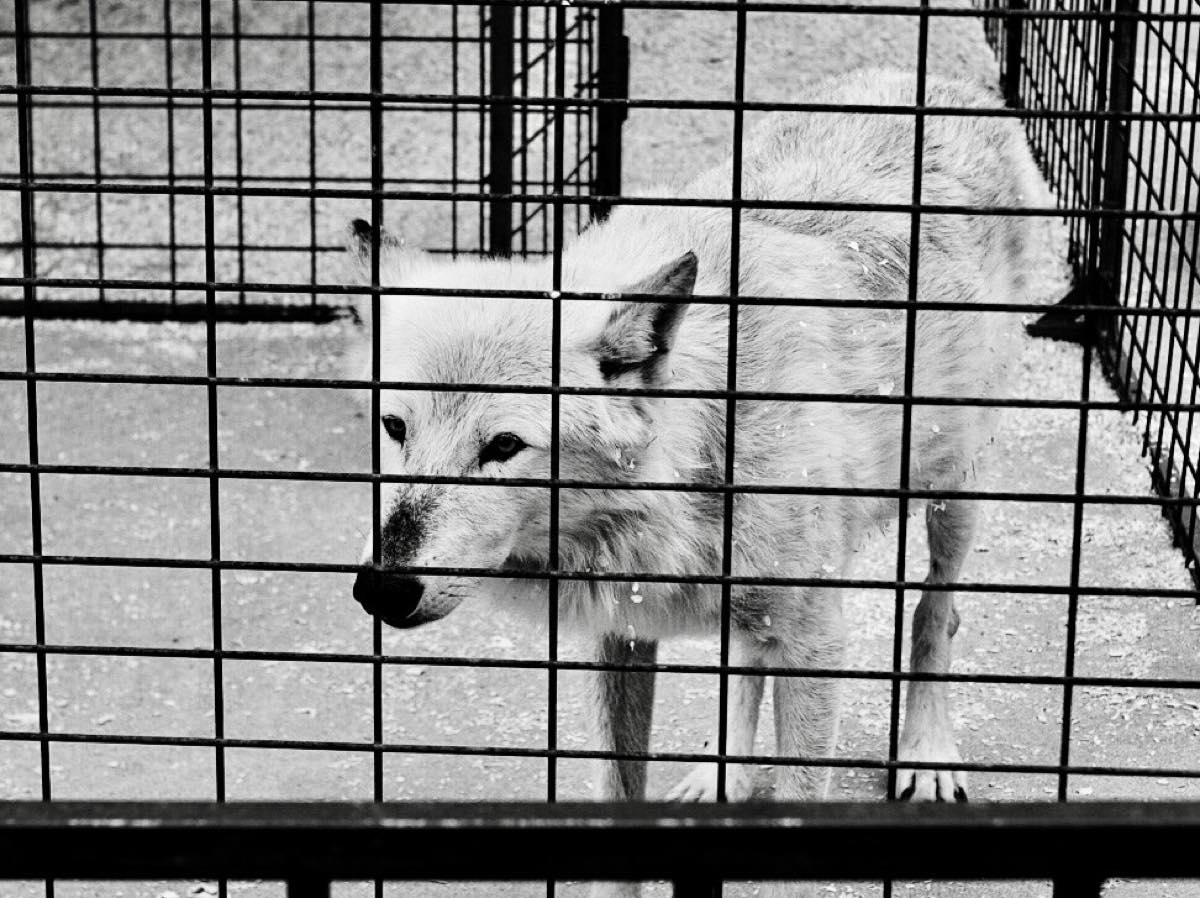“And so I kept running, and Brenin [my pet wolf] kept running with me; and we both got fitter, and leaner, and harder. This pragmatic impetus for my new-found fitness, however, quickly changed into something else. On our runs together, I realized something both humbling and profound: I was in the presence of a creature that was, in most important respects, unquestionably, demonstrably, irredeemably and categorically superior to me. This was a watershed moment in my life.” -Mark Rowlands, The Philosopher and The Wolf: Lessons from the Wild on Love, Death, and Happiness
The first time I truly felt the presence of wolves in the wild was during the 2013 Iditarod Trail Invitational. Dragging a sled filled with my gear and food, I’d followed a frozen snowmachine track along the Yentna and Skwentna rivers to the foothills of the Alaska Range. I’d then postholed in shin-deep snow over Rainy Pass, gaining safe passage into the Interior.
After 210 miles of slogging, I dropped into the Rohn checkpoint. I sat by the woodstove on a snowbank padded with fresh-cut cedar for a cup of hot chocolate, a can of soup, and a nap. The rudimentary wall-tent cabin provided a welcome reprieve from the harsh reality of winter in Alaska.
I then ran through the Farewell Burn, the site of Alaska’s largest forest fire where a million-and-a-half acres of forest had gone up in flames in the late 1970s. I distinctly remember feeling a shift in mood as if suddenly everything had become a little more remote, serious, and committed. The landscape is intimidating—barren, inhospitable, and lined with charred trees for miles on end. My sled bobbed rhythmically behind me as I ran. It was a plastic shell filled with many comforts, including a down-feather sleeping bag and salmon that I didn’t catch myself. There, in the wee hours of the morning, I was acutely aware of my frailty in this environment, of my complete dependance on the stuff I had brought with me to survive.
Reflecting on that moment afterward I remarked: “The beam of my headlamp follows the perfectly symmetrical tracks of a wolf. I imagine the animal moving gracefully, powerfully, moving like one who belongs here, unlike us, clumsy, struggling strangers in a land too great for our footsteps.”
I’d been thinking about wolves recently after attending a fascinating presentation by Paula Woerner who heads up the Wolfwood Refuge, a sanctuary for wolves and wolfdogs located in southern Colorado. Paula was in Estes Park, Colorado for a day, with one of their rescue wolves, Ra, and several other wolfdogs. In her talk, she dispelled many of the myths surrounding our fear of wolves, such as the fact that wolf attacks on humans are extremely rare and their natural instinct is to flee rather than hunt us. She also highlighted the enumerable benefits wolves have on our ecosystems. The reintroduction of wolves in Yellowstone National Park in the 1990s is but one powerful example of the dramatic positive impact they have on restoring balance to the land, forests, and rivers.
As I listened to Paula talk, I looked over at Ra, who sat quietly in his cage. Ra had been bred for sale in Alaska, but was deemed unworthy due to an underbite. He’d been permanently chained up to a two-foot leash before being rescued by Wolfwood Refuge as an older pup. While Ra’s life in captivity is now immeasurably better than it was, it’s still hard to see such a majestic animal behind bars. The image of this caged wolf has remained scarred in my memory as a potent reminder of the immense privilege we have as runners to roam this land freely and the inherent responsibility that freedom engenders.
Call for Comments (from Meghan)
- When as a runner have you felt the power of the wild and your smallness within it? Can you describe the situation and transport us into it as Joe has?
- What responsibility do you think we as trail runners have to the wild places through which we run?

Ra. Photo: Joe Grant

